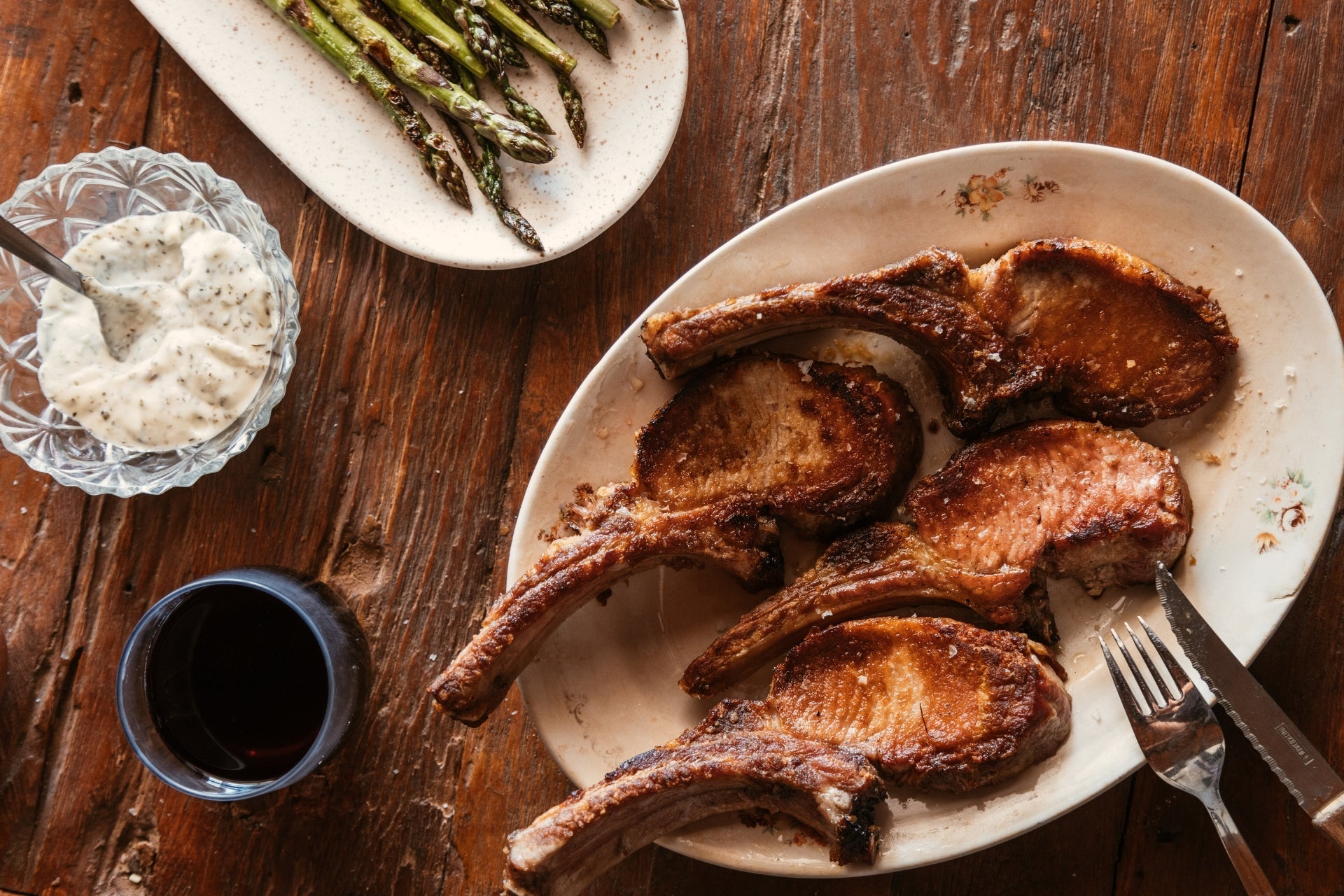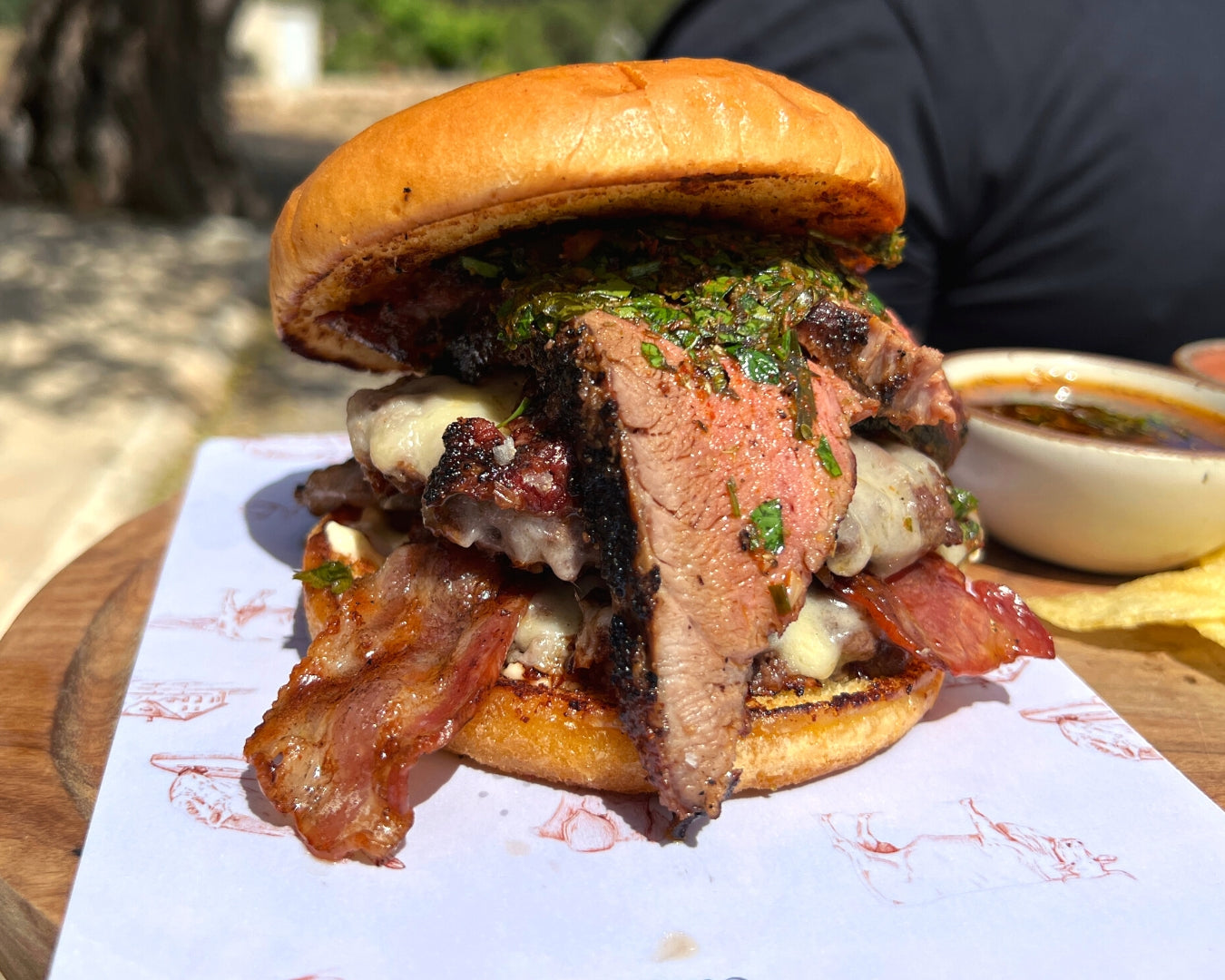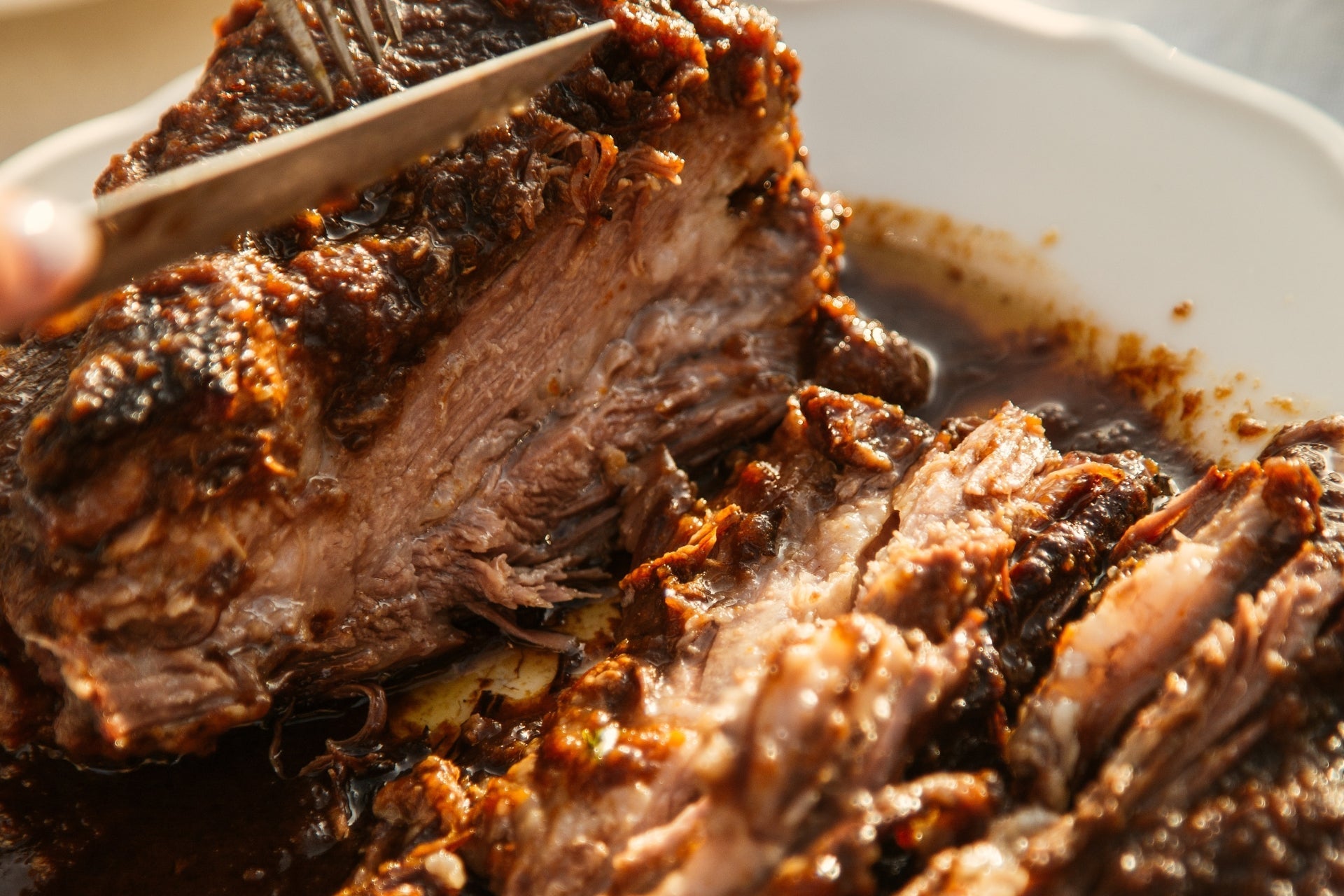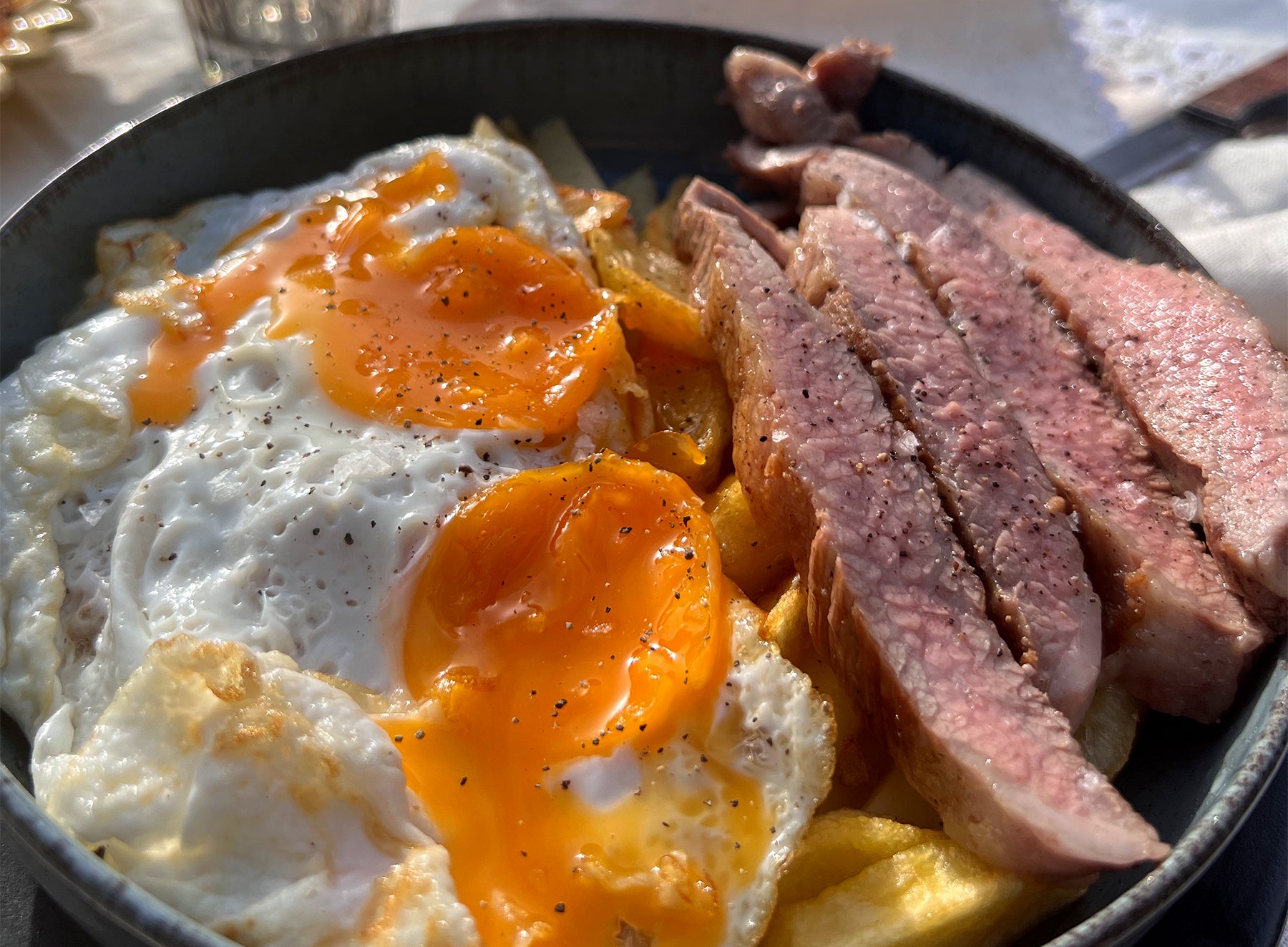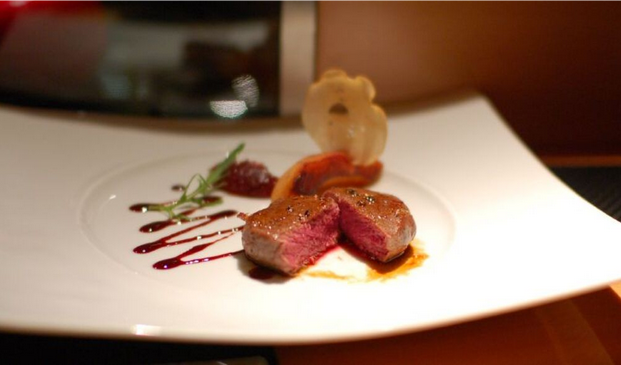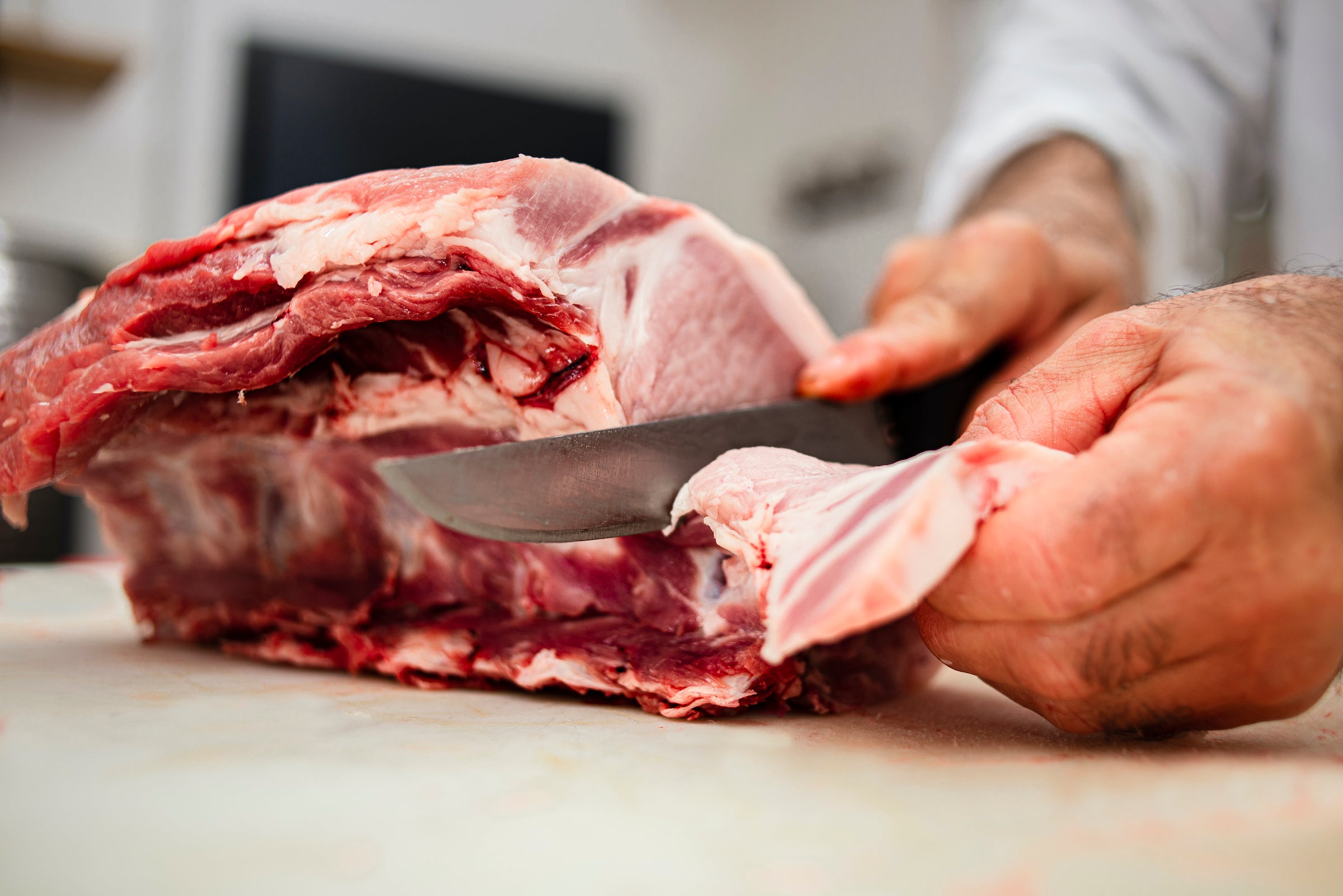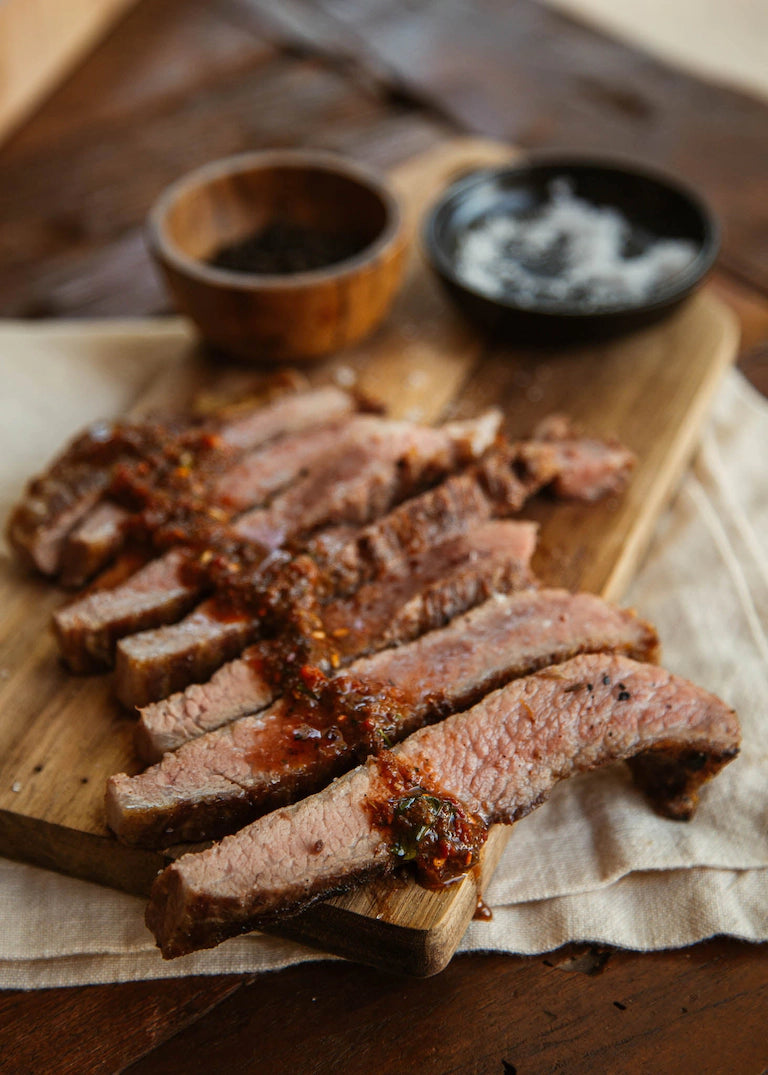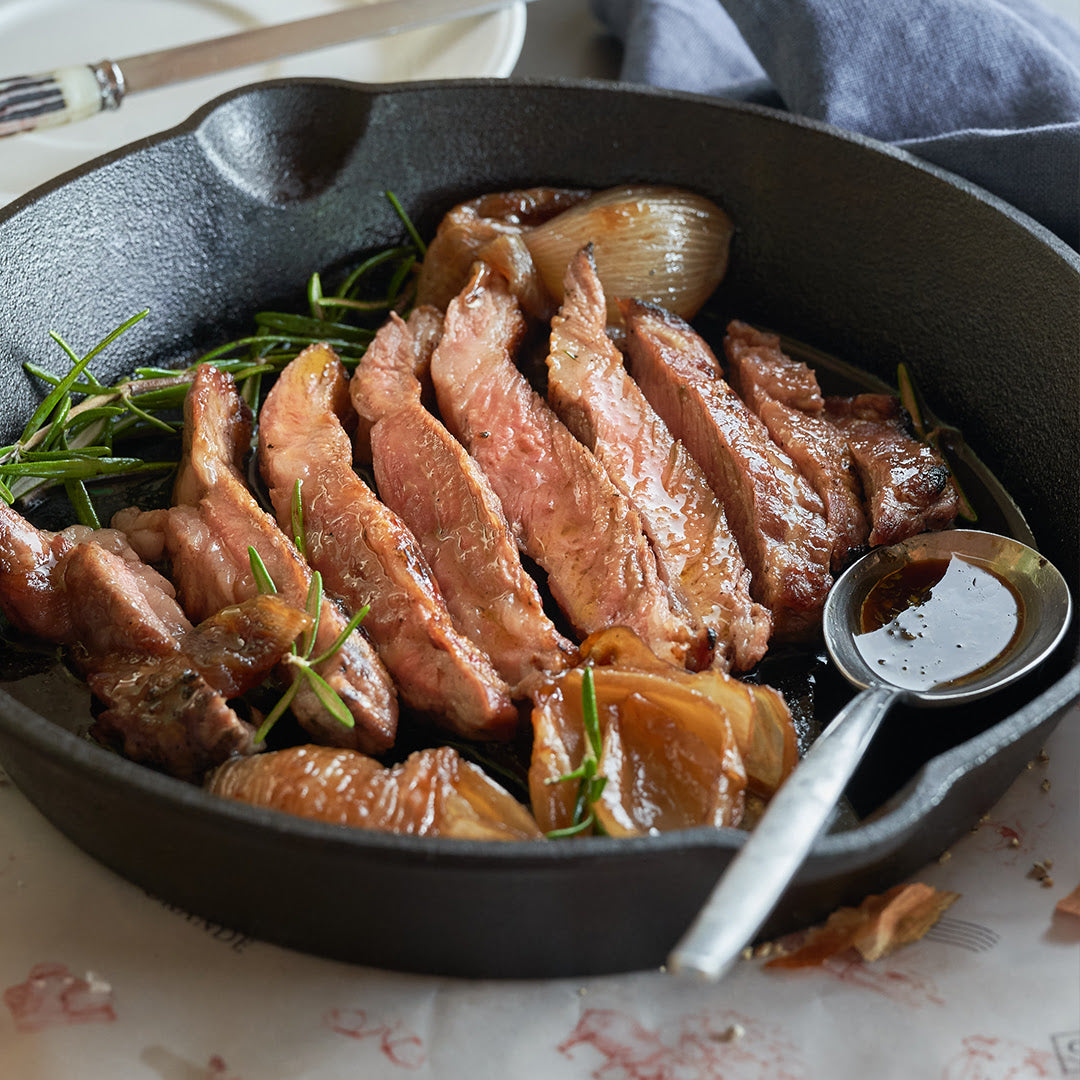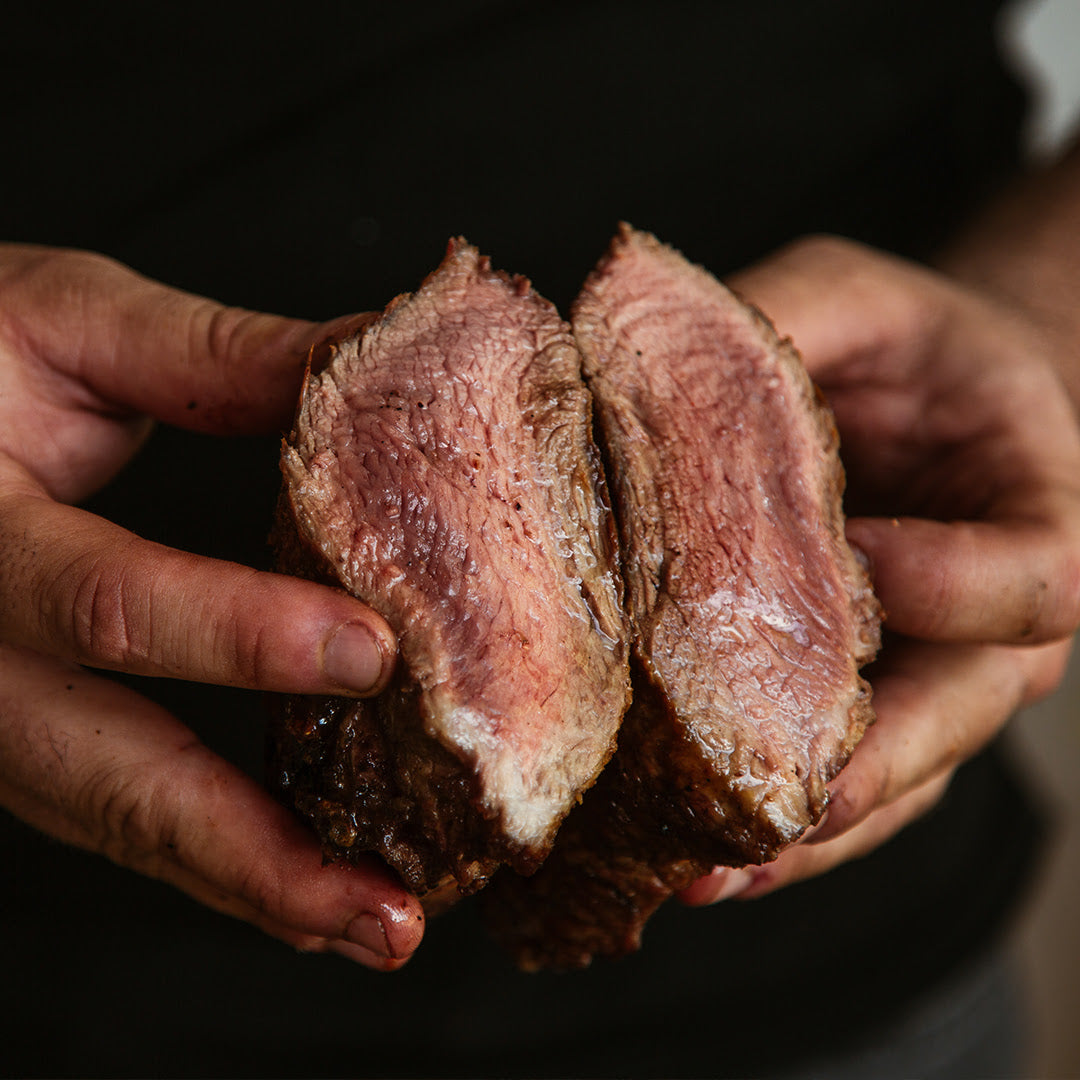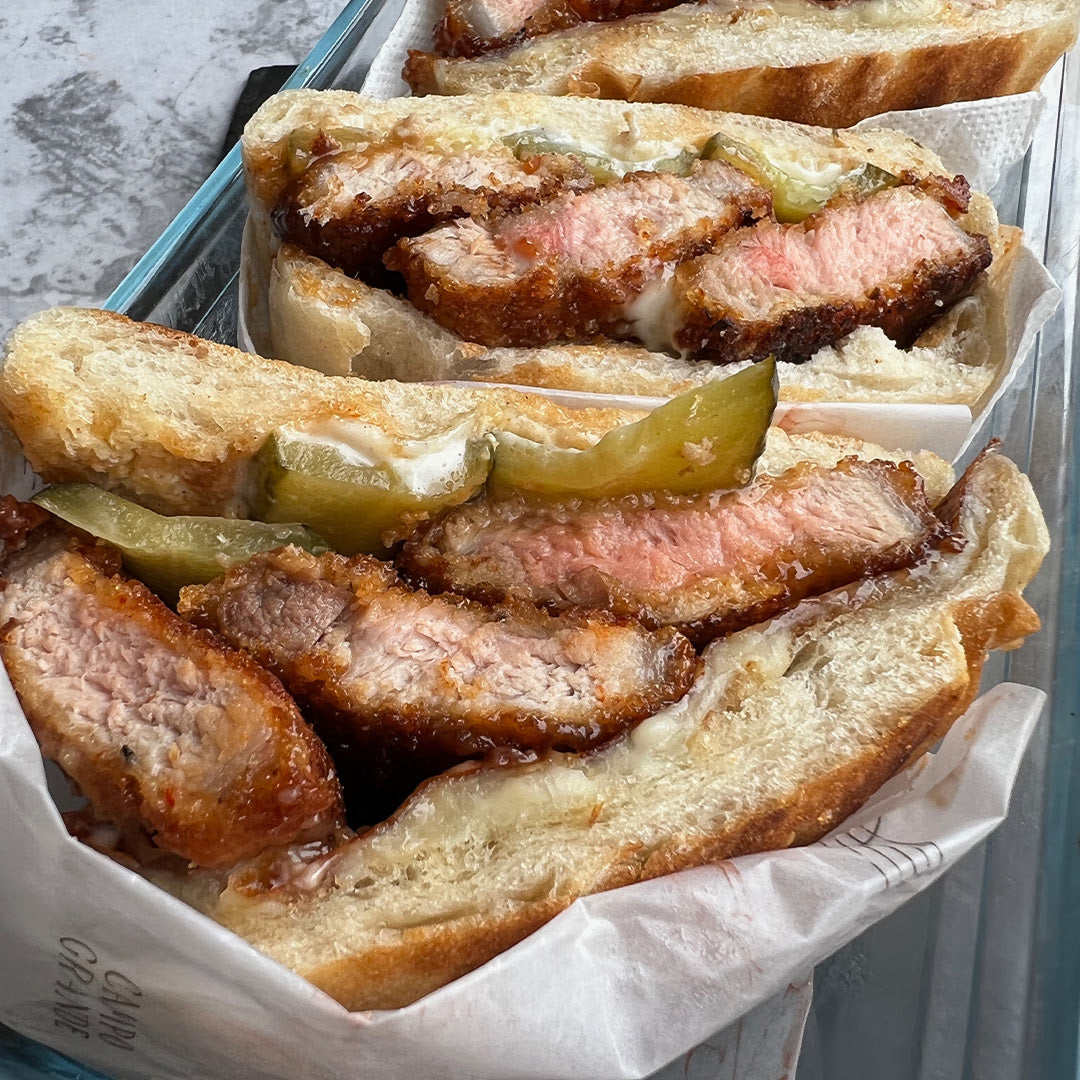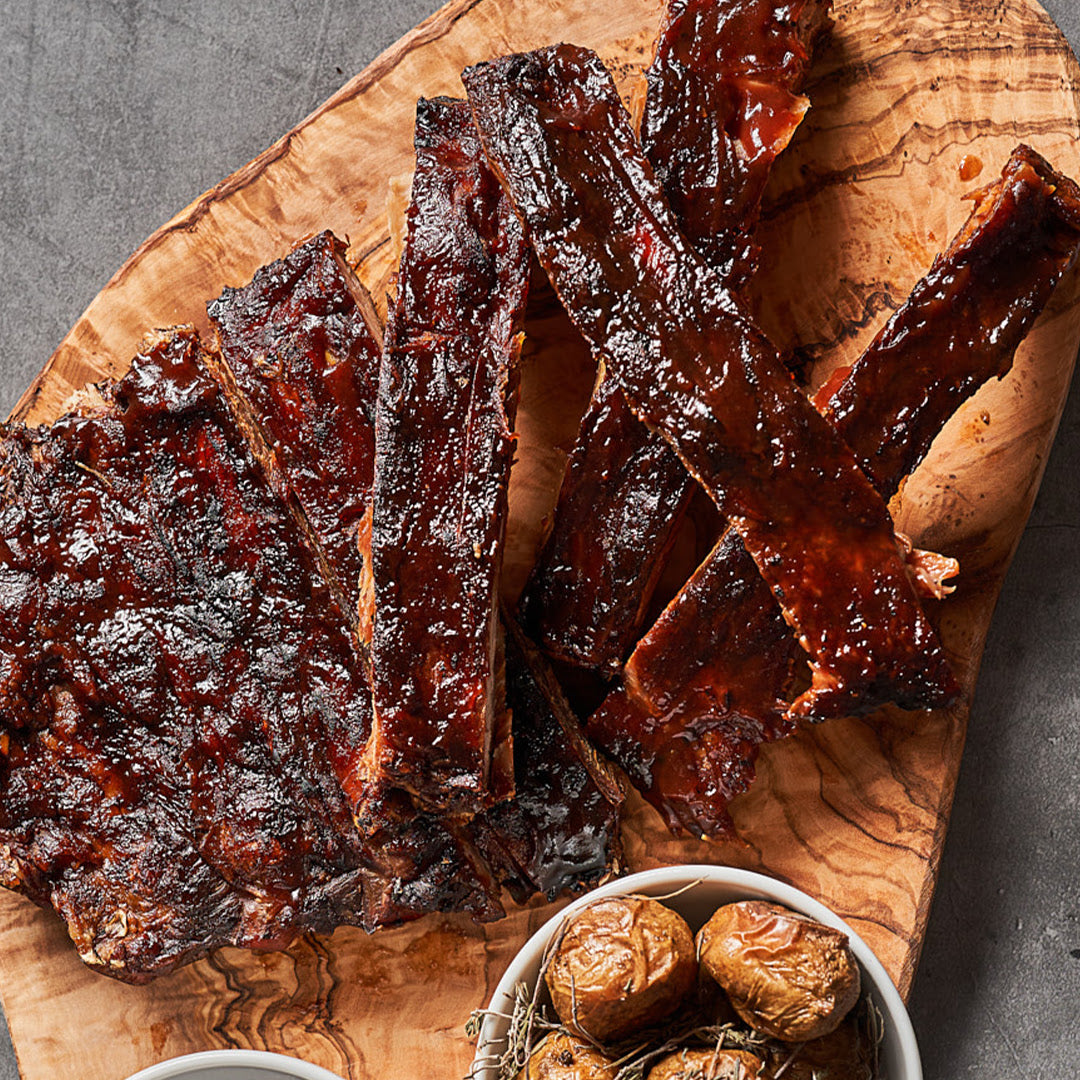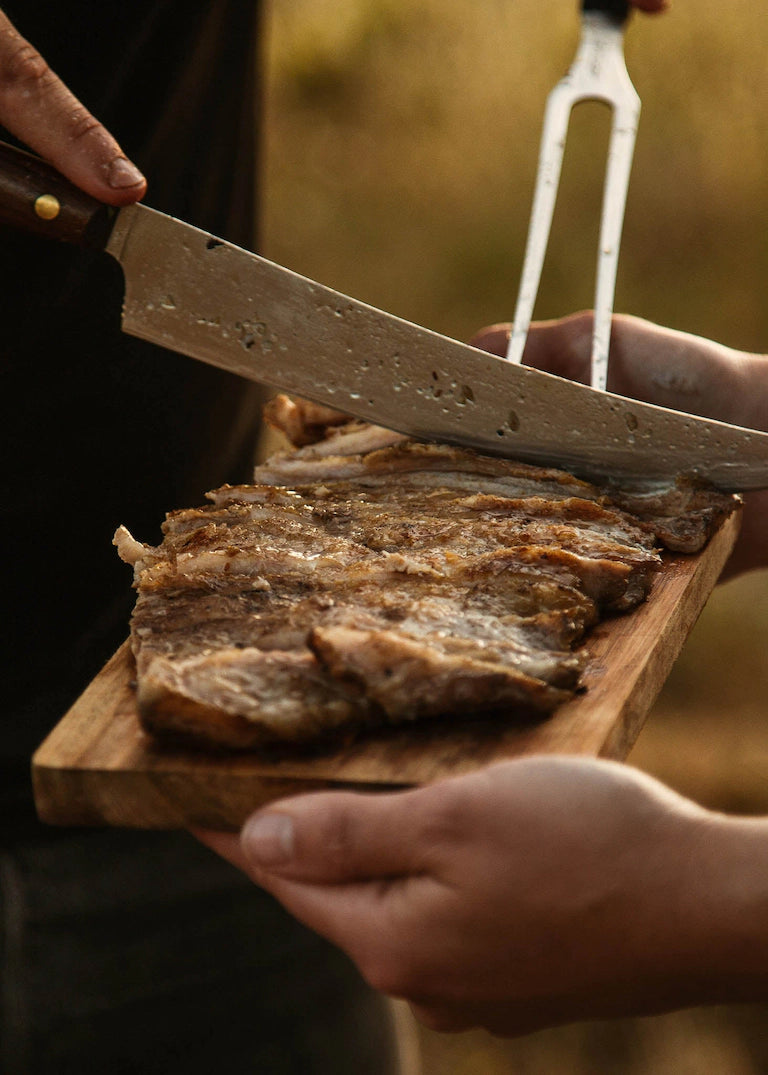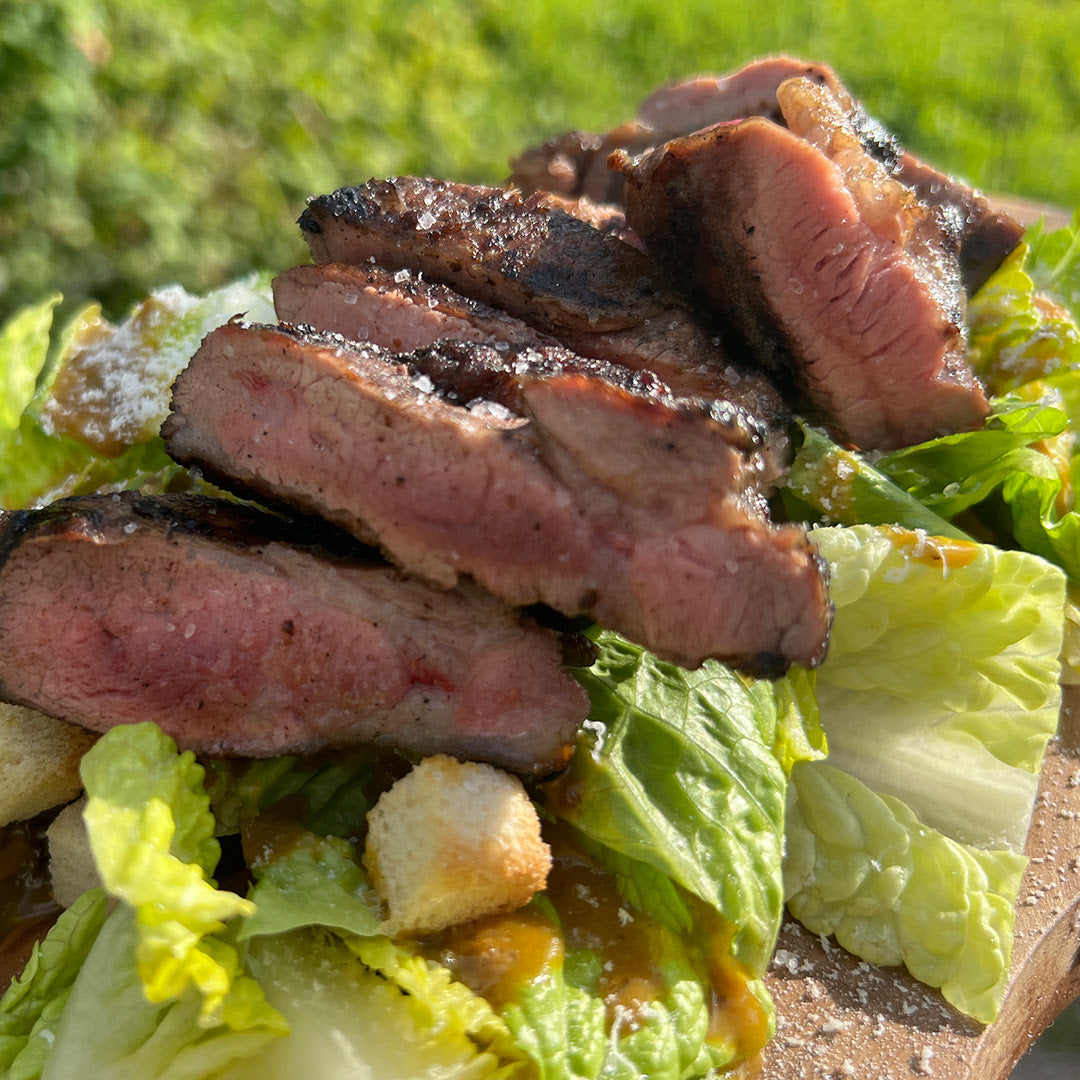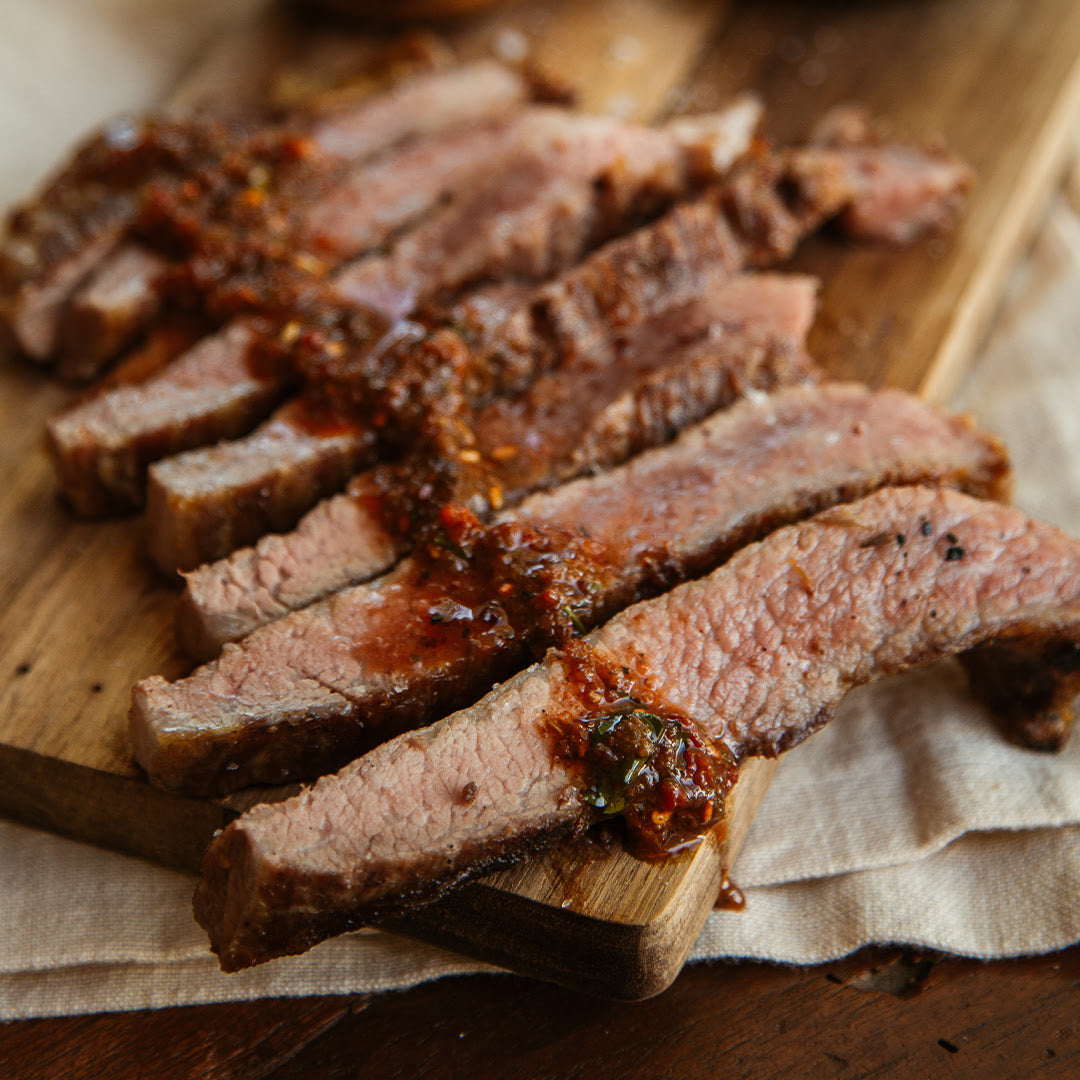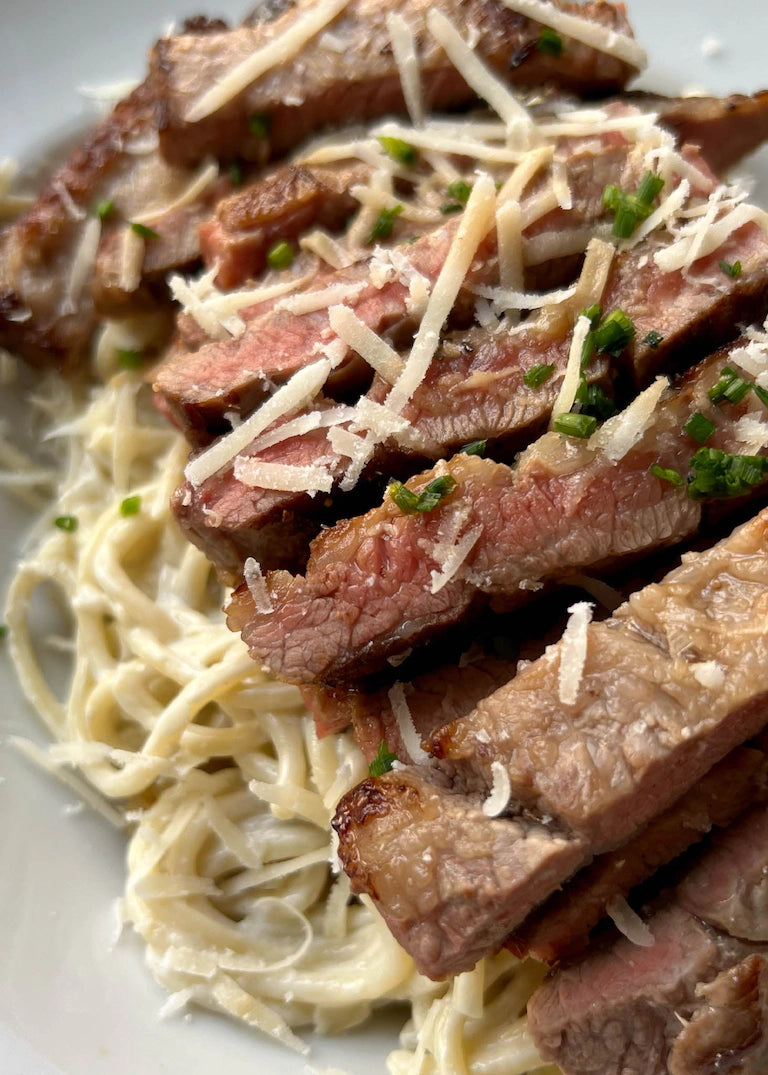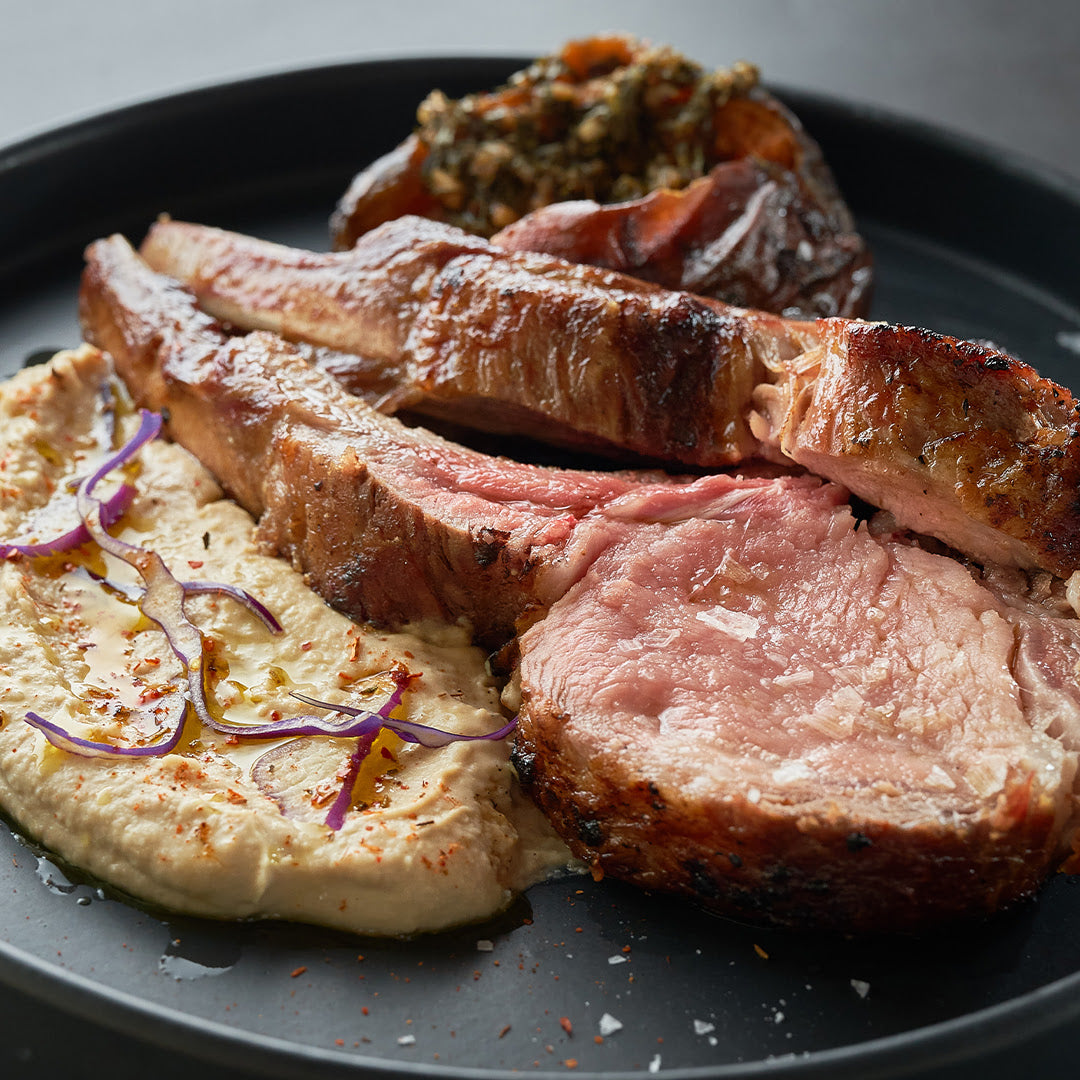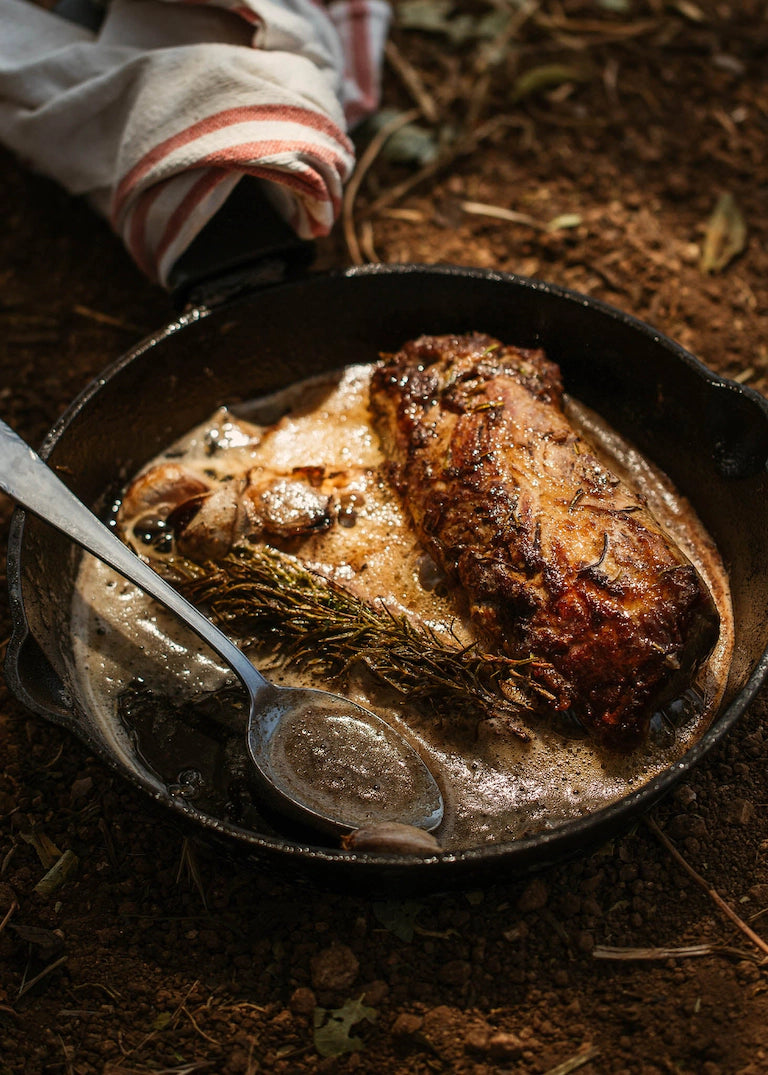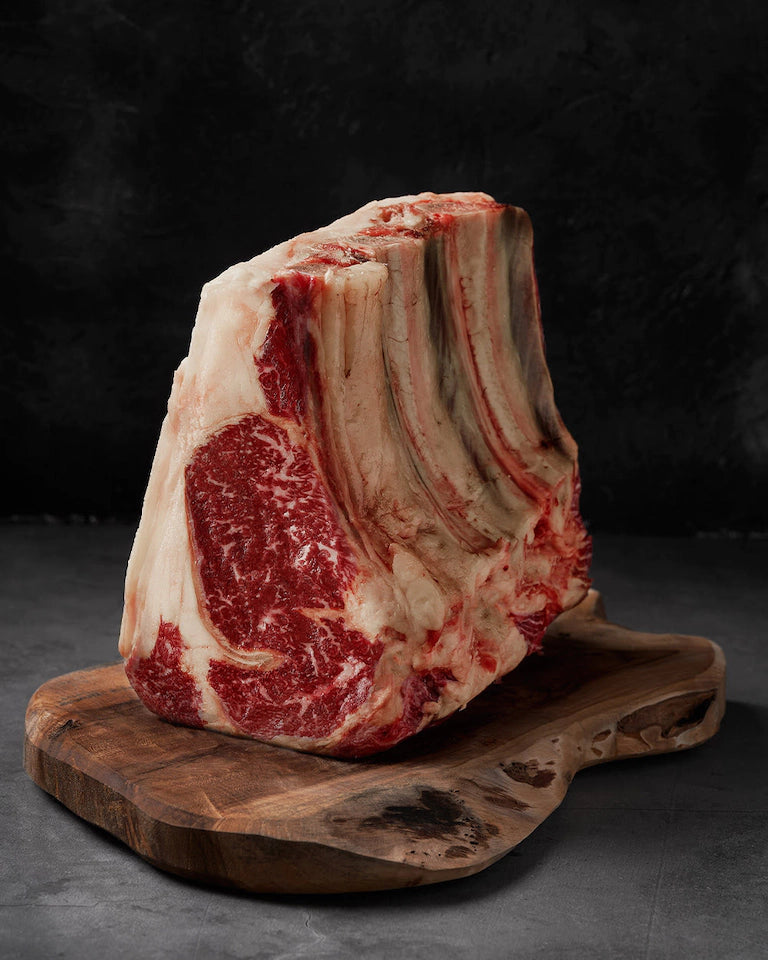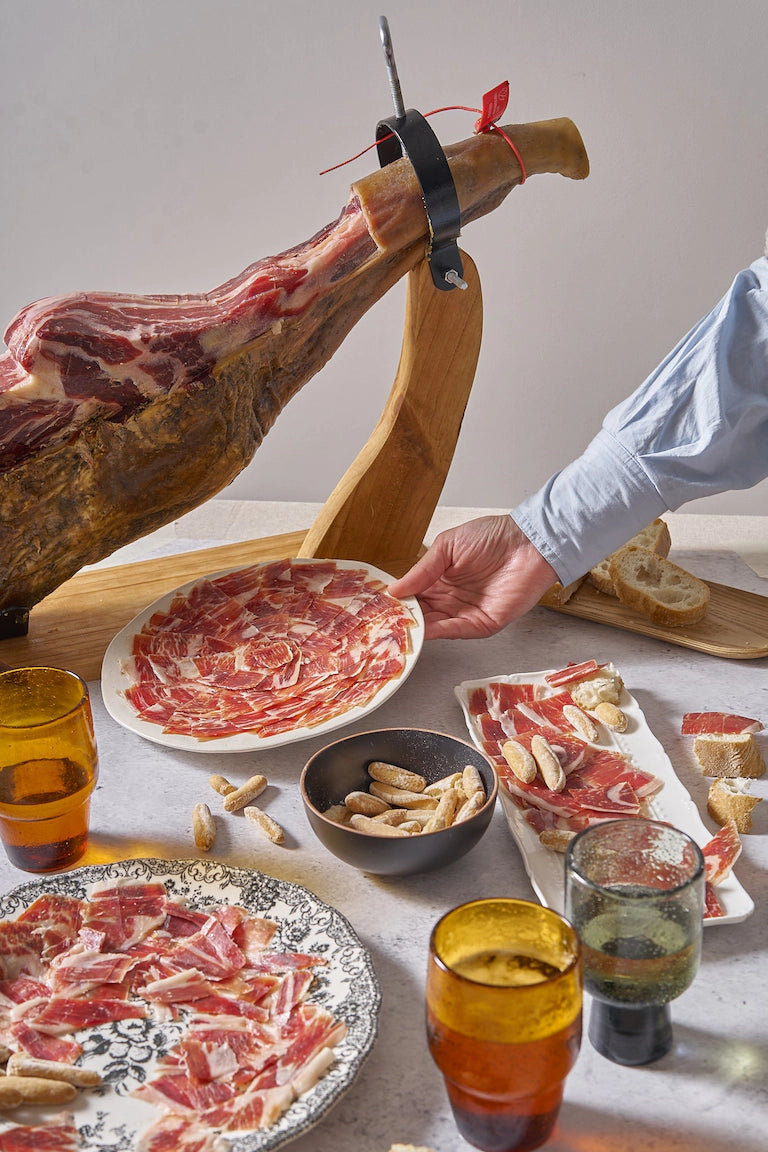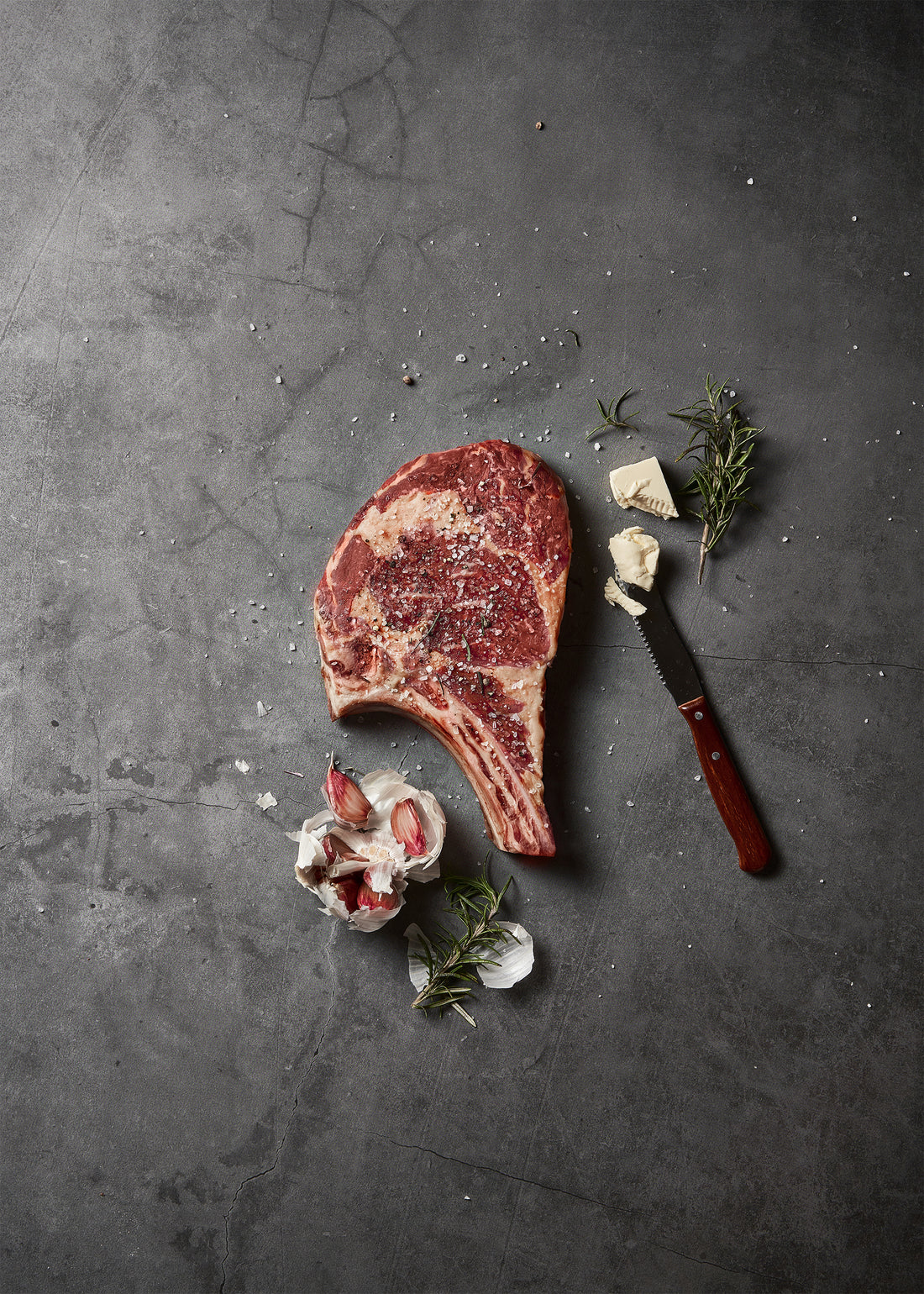
The strip steak, also known as New York, or Kansas City strip, is considered a premium cut of beef, along with filet mignon, rib-eye, and porterhouse or T-bone steak. Strip steak is derived from the beef short loin subprimal, and it begins with a short loin that has had the tenderloin removed, resulting in a bone-in strip loin.
The bone in question is the backbone (specifically, the thoracic vertebrae), which is typically removed to create a boneless strip loin. However, the muscle in the meat determines how flavorful and tender a steak is.
What is Strip Steak?
The strip loin's main muscle is the longissimus dorsi, which is also the main muscle in a rib-eye steak. It stretches from the hip bone to the shoulder blade and is a very tender muscle.
Strip steaks lack connective tissue and fat, which are found primarily between muscles because they are generally a single muscle. They do, however, have a high level of intramuscular fat, or marbling, which adds flavor and moisture to a steak. In fact, one of the primary characteristics used to assign quality grades to meat is the degree of marbling. In general, more marbling indicates higher quality. In the case of a strip steak, this places it among the more expensive beef cuts.
Unbeknownst to many, the Strip steak is actually one-half of the popular T-bone steak. So, if you know and love a T-bone, chances are you've had a taste of a strip steak without even realizing it.
That impressive bone in the middle separates two different types of steak, one side being a small piece of Tenderloin steak, and the other, a larger piece of Strip steak.
Strip steak may also contain the multifidus dorsi and the gluteus medius, depending on the butcher. The multifidus is a tender muscle that can be found at the top (the wide end) of a strip steak. Some butchers remove them from the strip loin, but it's still a tasty cut of meat.
However, you don't want the gluteus medius in your strip steak. It's the sirloin muscle, and you'll only find it in the final two strip steaks from the short loin. The gluteus muscle is tougher than the strip loin and has a chewy vein running through it.
The Strip steak gives the T-bone its flavor because it has more marbling than the much leaner Tenderloin while remaining incredibly tender, which is why it is so popular.
It's one of the higher-end steaks that will command a premium price in both restaurants and supermarkets. It's also known as the New York Strip. Fortunately, the region where it comes from produces a lot of steaks, so you'll have no trouble finding them.
How to Cook Strip Steak
Strip steaks are simple to prepare on the grill, broiler, or in a cast-iron skillet on the stovetop. You can also sear them in a skillet before transferring them to a 425 F oven to finish cooking.
Make sure to allow the steaks to come to room temperature for at least 30 minutes before cooking to ensure even cooking. Pat them dry with paper towels to ensure a quick sear. And, with this leaner cut, don't be afraid to use some butter.
Strip Steak Flavor Profile
Strip steaks are popular for their beefy flavor and are usually boneless, but the bone-in version is also known as a shell steak or club steak. The bone adds flavor and moisture to the steak while also making it more visually appealing, which is why it is commonly served in steakhouses and fine restaurants.
With more intramuscular fat than a Sirloin or Filet, the Strip is known for its rich flavor and firmer texture.
It's less tender than leaner steaks and has less marbling and thus slightly less flavor than a Ribeye, but the Strip strikes a happy medium between tenderness and flavor.
Because of the fat cap, the flavor is fuller and butterier, adding beefy depth.
What to Look For In a Strip Steak
It's all about getting the most flavor with the least amount of effort, and strip steaks are excellent at achieving this balance. They have a lot of natural marbling, which is a term for the white streaks of fat that proliferate throughout the meat. Despite this, they don't have a lot of gristle or large chunks of fat that you'll have to cut away before serving.
The first thing you should look for when inspecting a steak at the market is the marbling. The best steaks will have an even pattern of white flecks mixed throughout, whereas less expensive cuts will be a more even red. The more fat that is mixed into the meat, the more flavor there will be.
